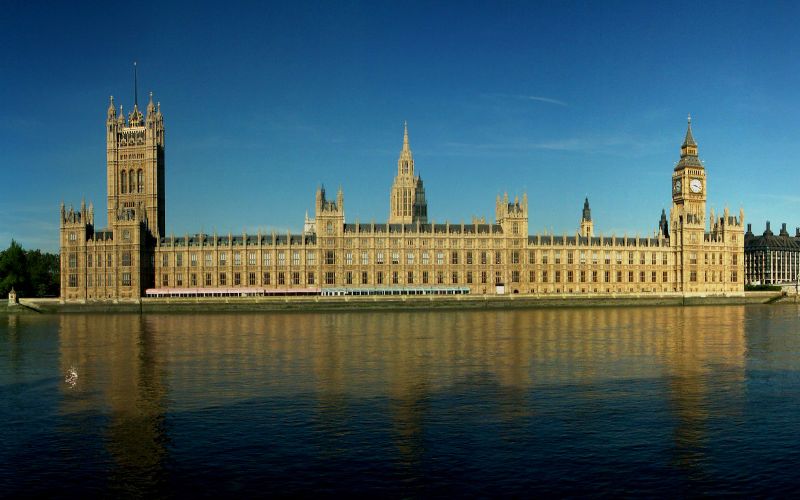
This photo of the Houses of Parliament in London is part of one of the panoramic images found on the PanoramicEarth.com Tour of London. There are over 100 images taken from around London linked to an interactive map.
Plan your visit to London by taking advantage of these London Hotel Specials or Thomson City Breaks. Get the most of London with these London Guide Books
The Houses of Parliament is the seat of debate between the parties in Britain, and the centre of much politicking and protest. A building and symbol of power and government much love, and equally hated by many. Guy Fawkes Night (November 5th) celebrates the failure of a plot to blow up the Houses of Parliament, thereby killing King James 1 and both the House of Commons and the House of Lords in one swoop, in his Gundpowder Plot in 1605.
The Houses of Parliament are also known as the Palace of Westminster. The building sits on the north bank of the Thames in the City of Westminster. The Palace is in fact an amalgamation of several buildings, the oldest surviving part of which dates back to 1097. However, most of the Palace of Westminster was destroyed by fire in 1834, and much of the present building dates from the 18C. The Palace of Westminster was rebuilt in a Gothic style, and one of the most famous features is St. Stephens Tower, which contains the bell Big Ben, which has now become the common, but wrong, name for the tower itself.
The British Parliamentary system can (and does) seem to many a complex affair. There are two ‘Houses’, that of the Commons (an elected body) and that of the Lords (currently filled by hereditary titles and life appointments). Thus within the Houses of Parliament there are two ‘chambers’ where the different bodies meet. The elected Members of Parliament (MP) in the Commons, and Piers in the Lords. Debate, procedure and address is sometimes archaic, prosaic and often at times lengthy.
The Houses of Parliament are well worth a visit. Residents of the UK can make arrangement to visit through their MP both while Parliament is in session and when in recess. Overseas visitors are only able to visit the Houses of Parliament during the summer recess. Apart from the Chambers of Commons and Lords, the Palace of Westminster contains over 1000 rooms, including libraries, conference rooms, and not a few bars.
Originally the Palace of Westminster served as the principal residence for the monarch in London, from the time William the Conqueror (1066) through to Henry VIII when a fire destroyed a part of the building in 1529. The King then moved to York Palace. Westminster Hall, the Jewel Tower, the crypt of St. Stephens Chapel and the cloisters are the only parts of the building dating from this era. The rest was destroyed by fire in 1824. The Chamber of Commons was again destroyed by bombing during WWII.
The Palace of Westminster is a Grade 1 listed building, greatly restricting any further alterations to it’s structure. Combined with Westminster Abbey and St. Margaret’s the area is classified as a World Heritage Site. There is so much that could be said about the building and those with more interest should see the Wikipedia article on the Houses of Parliament and the Palace of Westminser.

Two fulll panoramic images taken of the front and back of the Palace of Westminster can be found on the London tour by PanoramicEarth.com. An enlargement of this photo can be found on Flickr.
For more articles on London see the London Index or select one of the labels at the bottom.

No comments:
Post a Comment